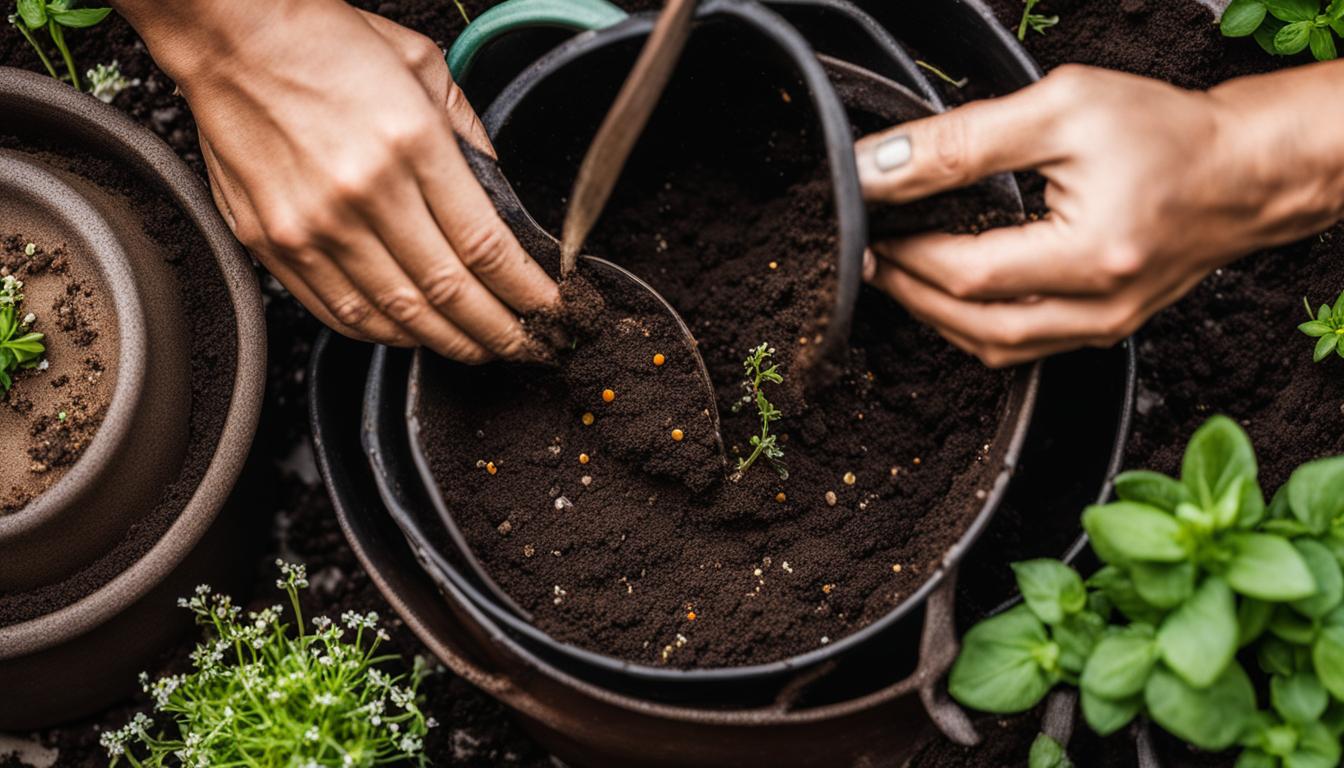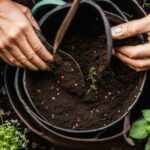If you’ve always wanted to start a garden but didn’t know where to begin, you’re in the right place. In this article, we’ll share beginner gardening tips and show you how to get started with gardening. Whether you have a green thumb or not, you can turn your gardening dreams into reality.
Starting a garden is a great way to connect with nature, enjoy the beauty of plants, and even grow your own delicious vegetables. But before you dig in, let’s go over the basics of getting started.
First, it’s important to select the perfect garden site. Choosing a location that receives ample sunlight, has good drainage, and is protected from strong winds is key. We’ll discuss this in more detail in section 2.
Next, you’ll need to prepare the soil and choose the right vegetables for your garden. Don’t worry if you’re new to this – we’ve got you covered with easy-to-follow steps in section 3.
By following these beginner gardening tips, you’ll be well on your way to starting a garden that will bring you joy and delicious homegrown produce. So, let’s dive in and unleash your inner gardener!
Selecting the Perfect Garden Site
When it comes to gardening basics, one of the first things you need to do is select the perfect garden site. This sets the foundation for a successful gardening journey. The key factors to consider include sunlight, soil drainage, and wind conditions. By taking these into account, you can create an environment that promotes healthy plant growth.
To ensure your plants receive adequate sunlight, choose a location that gets at least 6 to 8 hours of direct sunlight per day. This is crucial for most vegetables to thrive. Additionally, make sure the soil drains well and doesn’t hold excess moisture. Poor drainage can lead to root rot and other plant diseases.
Another important consideration is wind conditions. Select a stable location that is protected from strong winds, as they can damage young plants and hinder their growth. By finding a sheltered spot, you provide a better growing environment for your garden.
Table: Factors to Consider when Selecting a Garden Site
| Factor | Description |
|---|---|
| Sunlight | Choose a location that receives 6 to 8 hours of direct sunlight per day. |
| Soil Drainage | Ensure the soil drains well to prevent waterlogging and root rot. |
| Wind Conditions | Select a stable location that is sheltered from strong winds to protect your plants. |
By taking the time to carefully select your garden site, you set yourself up for gardening success. Remember to prioritize factors such as sunlight, soil drainage, and wind conditions to create an optimal environment for your plants to thrive.
Preparing the Soil and Choosing Vegetables
Once you’ve selected a suitable garden site, it’s time to prepare the soil and choose the vegetables you want to grow. Follow these easy gardening tips to ensure a successful start to your gardening journey.
Preparing the Soil
Start by loosening the soil with a spading fork or shovel. Remove any grass, weeds, rocks, and debris that may hinder plant growth. By creating a clean and fertile environment, you’ll provide the best conditions for your vegetables to thrive.
Mixing in organic matter such as compost or well-rotted manure will improve the soil’s texture and fertility. This nutrient-rich amendment will provide essential elements for the plants to grow strong and healthy.
Choosing Vegetables
When selecting vegetables for your garden, consider your level of experience and the preferences of your family. It’s recommended to start with easy-to-grow options that are suitable for beginners.
Popular choices for beginners include lettuce, green beans, radishes, and tomatoes. These vegetables are relatively low-maintenance and can tolerate a variety of growing conditions. Additionally, they offer a bountiful harvest that you can enjoy throughout the gardening season.
| Vegetable | Growing Difficulty | Preferred Sunlight | Additional Tips |
|---|---|---|---|
| Lettuce | Easy | Partial shade | Plant in succession for a continuous harvest. |
| Green Beans | Easy | Full sun | Provide stakes or trellises for support. |
| Radishes | Easy | Full sun to partial shade | Harvest when roots are mature, usually within a few weeks. |
| Tomatoes | Intermediate | Full sun | Stake or cage plants for support and proper growth. |
Whether you choose to start with seeds or young plants depends on your preference and the growing season in your region. Consult local gardening resources or nurseries for the best time to sow or transplant your chosen vegetables.
“Gardening for dummies? Don’t worry, with a little patience and the right guidance, anyone can become a successful gardener!”
Conclusion
Starting a garden can be an exciting journey, especially for beginners. With some basic gardening knowledge and a little bit of effort, you can create a thriving and bountiful garden right in your own backyard. By following these gardening basics and beginner gardening tips, you’ll be well-equipped to embark on your new green thumb adventure.
Remember, the key to successful gardening is providing your plants with adequate sunlight. Make sure to choose a garden site that receives at least 6 to 8 hours of direct sunlight per day. This will ensure that your vegetables have the necessary energy to grow and produce delicious crops.
In addition to sunlight, it’s crucial to prepare the soil properly. Take the time to remove any grass, weeds, rocks, and debris from your garden plot. Mixing in organic matter like compost or well-rotted manure will enrich the soil and improve its texture, providing a nurturing environment for your plants.
When it comes to choosing vegetables for your garden, start with easy-to-grow options suited for beginners. Lettuce, green beans, radishes, and tomatoes are great choices that are both delicious and beginner-friendly. Consider the preferences of your family and the availability of certain vegetables in your area to make informed decisions.
With a little patience, care, and attention, your garden will flourish, and you’ll be rewarded with the joy of harvesting your own homegrown vegetables. So don’t hesitate to get started with gardening today, and enjoy the many benefits it brings to your life.
FAQ
What factors should I consider when selecting a garden site?
When selecting a garden site, consider factors such as sunlight (6 to 8 hours of direct sunlight per day), good drainage, stability, and protection from strong winds.
How do I prepare the soil for my garden?
Start by loosening the soil with a spading fork or shovel and removing any grass, weeds, rocks, and debris. Mix in organic matter like compost or well-rotted manure to improve soil texture and fertility.
What are some easy vegetables to grow for beginners?
Easy-to-grow vegetables for beginners include lettuce, green beans, radishes, and tomatoes. Consider your family’s preferences and the availability of these vegetables in your area.
Should I start with seeds or young plants?
It depends on your preference and the growing season in your region. Seeds are more cost-effective, but young plants may offer a head start. Consider the time and effort you’re willing to invest.
How long does it take for a garden to thrive?
With a little patience, care, and attention, your garden will start thriving within a few weeks to months, depending on the vegetables you’re growing.







